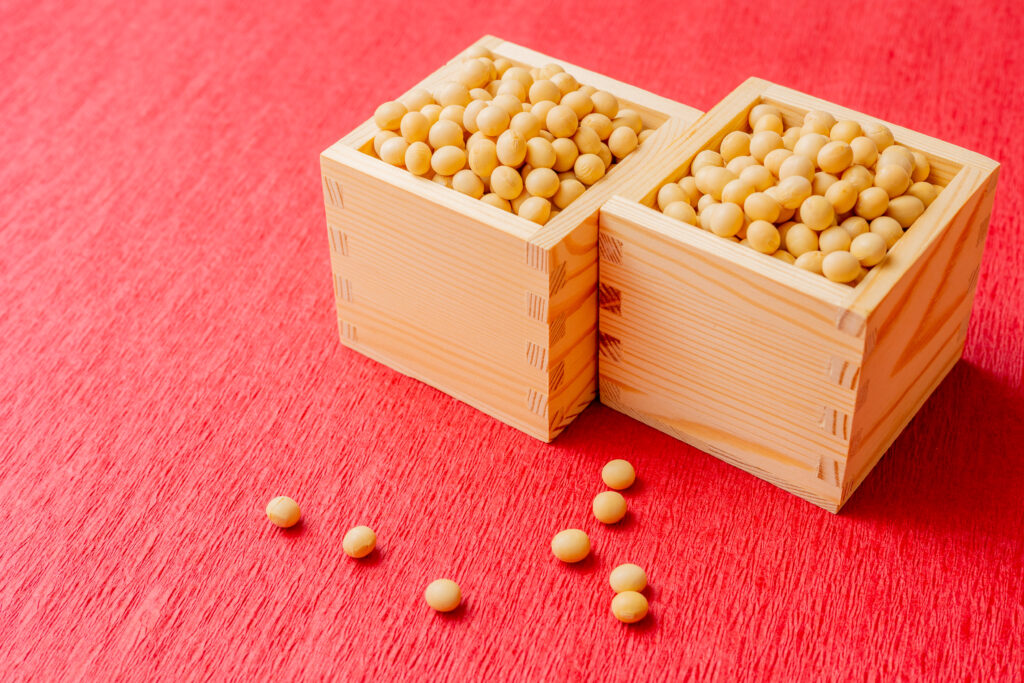Held in early February, the annual setsubun festival celebrates the beginning of spring. Originally though, this time marked the start of the new year as Japanese people followed the lunar calendar for much of its history. Although the Gregorian calendar has been adopted since 1873 due to the influx of Western influence during the Meiji Period (1868 – 1912), early February still represents a new start for people in Japan.

For this reason, a lot of the customs that take place on setsubun have to do with purging evil spirits before the new beginning, and ushering in good luck. One way in which people do this is through mamemaki, where typically children throw roasted soybeans (considered symbols of good luck in Japanese folklore) at an adult (for example, a parent at home or teacher at school) dressed up in a demon mask and costume.
There are a lot of temples in Japan that host mamemaki sessions so that you can do it with a crowd (and not have to fill the crevices of your home with tiny soybeans, which can call for a tiresome clean-up session afterwards).
While throwing the beans, it is customary to say:
“Oni wa soto! Fuku wa uchi!” → “Demons out! Good fortunes in!”
